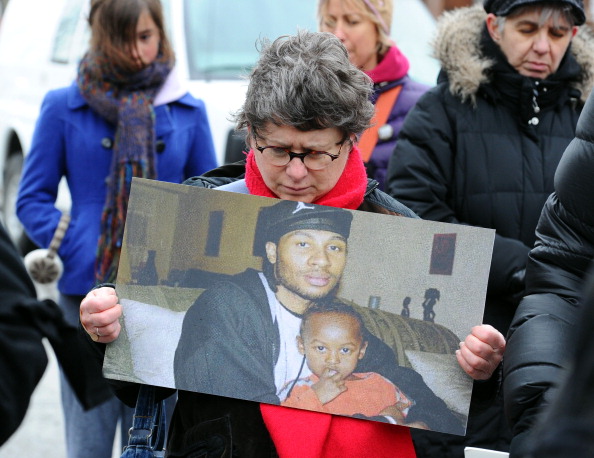Police officers are increasingly on the front lines of mental health in Canada.

And Sammy Yatim’s shooting death at the hands of a Toronto Police officer last year prompted public outrage and renewed scrutiny of the way police officers deal with people in crisis.
In all cases, officers have to be satisfied that the person is a danger to themselves or others before they can take any action under the Mental Health Act.
Each service determines its own intervention models. These are the three most common:
Mobile Crisis Teams (MCT) or Mobile Crisis Intervention Team (MCIT)
These include trained police officers accompanied by a mental health professional responding on-site to a crisis. The team only arrives after first responders decided the situation is safe and stable.
Crisis Outreach Assessment and Support Team (COAST)
Team of officers and mental health professionals that assess people over the phone and respond on-site. Provides follow-up care and referrals.
Crisis Intervention Team (CIT)
Trains first responders in crisis intervention. Although the specifics change depending on the police force, it’s often voluntary. All calls related to mental health crises will be diverted to the CIT.
The difference between the CIT and other models is that it trains first responders, says Randolph Dupont a University of Memphis professor and clinical psychologist who helped develop the model.
This means officers don’t have to wait for another team to come before they can help the person in crisis: They’re trained to do it themselves.
Toronto Police Service
Uses a Mobile Crisis Intervention Team to assess the person in crisis and connect him or her to follow-up services.
All officers are trained in communication and de-escalation techniques, which includes: continuously assessing the threat, being professional, modeling composure, being aware of body language, providing physical space as appropriate, using names and engaging, using calm and clear language, validating the person’s feelings/situation, encouraging relaxation, providing realistic assurances and remaining patient.
Officers at a scene decide whether to call in the unit.
Retired Justice Iacobucci’s report suggested these teams be available 24/7 in all parts of the city, not just in certain areas for part of the day, as they are now.
Calgary Police Service
The CPS has five Police and Crisis Teams (PACT), each of which has one constable and one mental health professional. The teams are called into crisis situations but establishes a long-term relationship with clients. It provides continuity of care and referrals to other services. The main goal is to divert people from the justice system to the health-care system.
Calgary Police doesn’t require existing members of the service to undergo additional mental health training once they join, but the force is trying to determine other ways – such as adding a Crisis Intervention Team or changing its protocol – to deal with crisis intervention, says Sgt. Erin Partridge of the Vulnerable Persons Team and the Police in Crisis Team.
Vancouver Police Department
Uses both MCIT and COAST models. “Car 87” is part of the Police and Community Response Unit and provides on-site assessments and intervention. But it lacks the resources for extended follow-up.
Assertive Community Treatment (ACT) is meant to help health-care professionals, when needed, during field visits to clients. ACT consists of psychiatrists, nurses, addictions counsellors and police.
Doctors are able to share information regarding the patient’s release and treatment with officers who are a part of ACT. In a crisis situation the officers can obtain the person’s medical information to decide on the best course of action.
Hamilton Police Service
The only police force in Canada to combine MCIT, COAST and CIT. The Hamilton Police instituted the Crisis Intervention Team as a way to bridge to gap created by COAST. The Crisis Intervention Team is called in when COAST is unable to respond because the situation is unsafe for mental health professionals, when COAST cannot get to the site on time, or when the situation occurs after-hours. The Mobile Crisis Rapid Response Team consists of an officer and a mental health worker and provides follow-up support where CIT officers do not.
CIT was developed in response to situation when a man suffering from mental illness was killed by police in Memphis, Tennessee. Community members called on police to change their methods in dealing with people in crisis.
The emphasis in CIT is on partnerships between every service available, says Dupont. It’s meant to be a collaborative effort to help people in crisis.




Comments